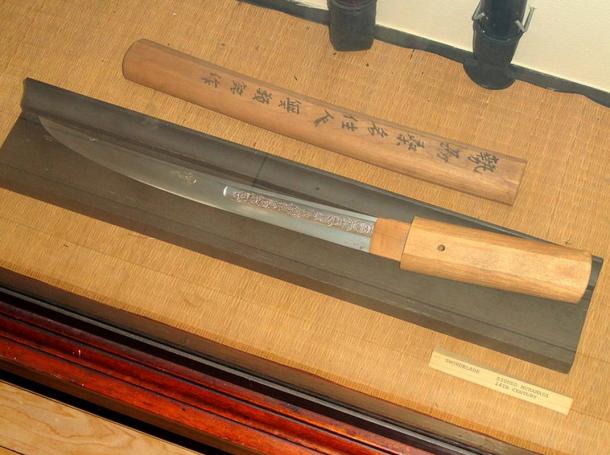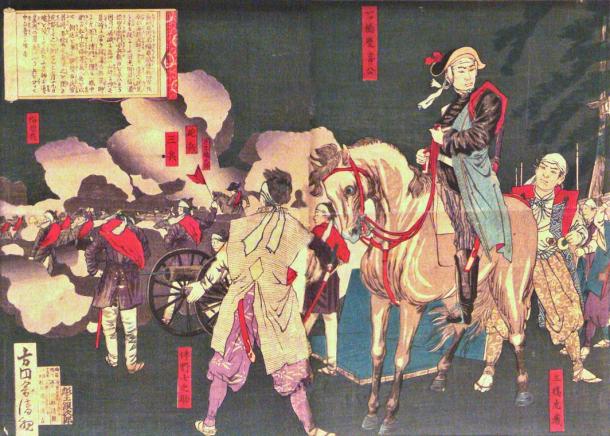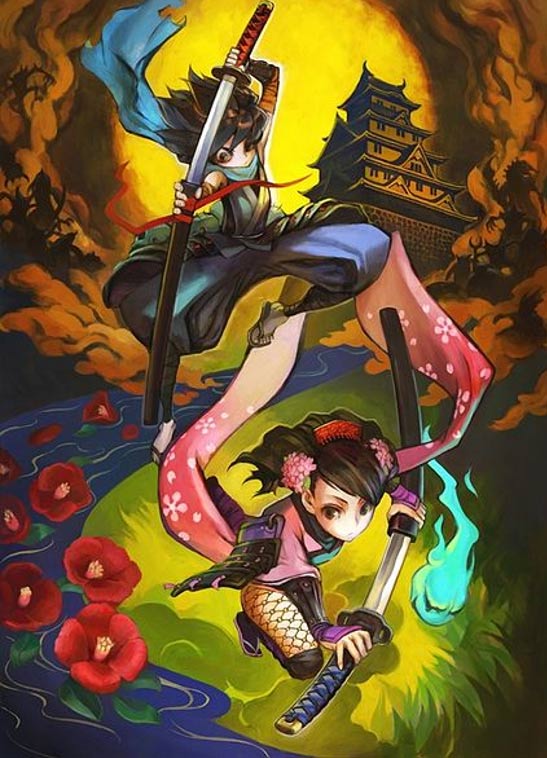The Curse of the Samurai Muramasa Blades
In Nitobe Inazo’s 1899 work exploring the way of the samurai, Bushido, the Soul of Japan , the sword is dubbed as the ‘Soul of the Samurai’. As swords were so highly revered, the swordsmith’s work became an immensely important task. In Chapter XIII of Nitobe’s work, the writer speaks about the swordsmiths as follows: “The swordsmith was not a mere artisan but an inspired artist and his workshop a sanctuary. Daily he commenced his craft with prayer and purification, or, as the phrase was, “he committed his soul and spirit into the forging and tempering of the steel.” Every swing of the sledge, every plunge into water, every friction on the grindstone, was a religious act of no slight import.” Some of Japan’s ancient swordsmiths became as famous as the samurai themselves. One of the most well-known Japanese swordsmiths was Muramasa Sengo, second only to Masamune Gorō.
Muramasa Sengo was a swordsmith who lived during the Muramachi period (between the 14 th and 16 th centuries A.D.). In some legends, Muramasa is portrayed as a disciple of Masamune, though this is historically impossible, as Masamune lived several centuries before his alleged student. Muramasa has been described as completely mad and prone to bouts of violence. It was therefore believed that these destructive qualities were passed by the master swordsmith into the blades he forged. The blades would then ‘possess’ their wielders, turning them into insane and deadly warriors, just like Muramasa himself.
Muramasa’s blades are often contrasted with those of Masamune. In one legend, Muramasa, who is said to be a disciple of Masamune, challenges his master to a sword-making competition. This was to determine who the greatest swordsmith in the country was. After both swordsmiths had completed their blades, they prepared to test their weapons. The contest was as such: The blade was to be suspended in a stream with the sharp edge facing the current. Muramasa’s blade cut everything that passed it, including the fish, leaves and even the air. By contrast, Masamune’s blade failed to cut anything. In spite of this, Masamune was declared the winner, as Muramasa’s blade was blood thirsty and cut indiscriminately, whilst Masamune’s did not cut and kill needlessly.

A blade of Katana made by Muramasa in 16th century, in Tokyo National Museum ( Wikimedia Commons )
Despite the bad reputation surrounding the blades Murasama forged, they were undeniably of high quality, and were popular in Japan. This is evident in the fact that his school of sword-making was passed down to his students and continued for the next two centuries. It was during the reign of Togugawa Ieyasu, the first shogun of the Edo period, that Muramasa’s blades fell out of favour. The shogun’s father, Matsudaira Hirotada, and grandfather, Matsudaira Kiyoyasu, were both murdered by their retainers who were wielding Muramasa blades. The shogun himself was also cut by a (supposed) Muramasa blade whilst inspecting the yari (a Japanese type of spear) of one of his generals.

Sword blade, 14th century Japan, signed Muramasa ( Wikimedia Commons )
These coincidences gave rise to the legend that Muramasa’s blades had the power to kill members of the Tokugawa family. Consequently, the shogun decided to ban ownership of the Muramasa blades. Many blades were melted down, though some were hidden away. The ban was taken seriously by the shogun, and those caught keeping Muramasa blades were severely punished. The most notable case was that of Takanak Ume, the Magistrate of Nagasaki. In 1634, the magistrate was discovered to have hoarded 24 Muramasa blades, and thus was ordered to commit seppuku (ritual suicide by disembowelment). Despite such harsh punishments, there were those who continued to keep Muramasa blades, and even had the markings on these blades changed so as to avoid detection from the authorities. In addition, numerous forgeries have been made over the year, thus making it quite difficult today for authentic Muramasa blades to be identified.

According to legend, Muramasa’s blades had the power to kill members of the Tokugawa family. Pictured: Tokugawa Yoshinobu of the Tokugawa clan organizing defenses at the Imperial Palace in 1864 ( Wikipedia)
As a symbol of the superior sword-making skills of the Japanese, Muramasa’s blades have also been incorporated into today’s popular culture. References to this icon can be found in various media ranging from video games to Japanese anime and even in the Marvel Universe.

Related Post
A shocking documentary proves that mermaids do exist
SHOCKING Revelation: Thuya, Mother of Queen Tiye, Was the Grandmother of Akhenaten and Tutankhamun—What Ancient Egyptian Secrets Did She Leave Behind?
Breaking News: Astonishing Discoveries at Karahan Tepe Confirm an Extraterrestrial Civilization is Hiding on Earth, and NO ONE Knows!
Breaking News: Researchers FINALLY Discover U.S. Navy Flight 19 After 75 Years Lost in the Bermuda Triangle!
NASA’s Secret Investigation: Uncovering the Astonishing Mystery of the UFO Crash on the Mountain!
Explosive UFO Docs LEAKED: Startling Proof That Aliens Ruled Ancient Egypt!